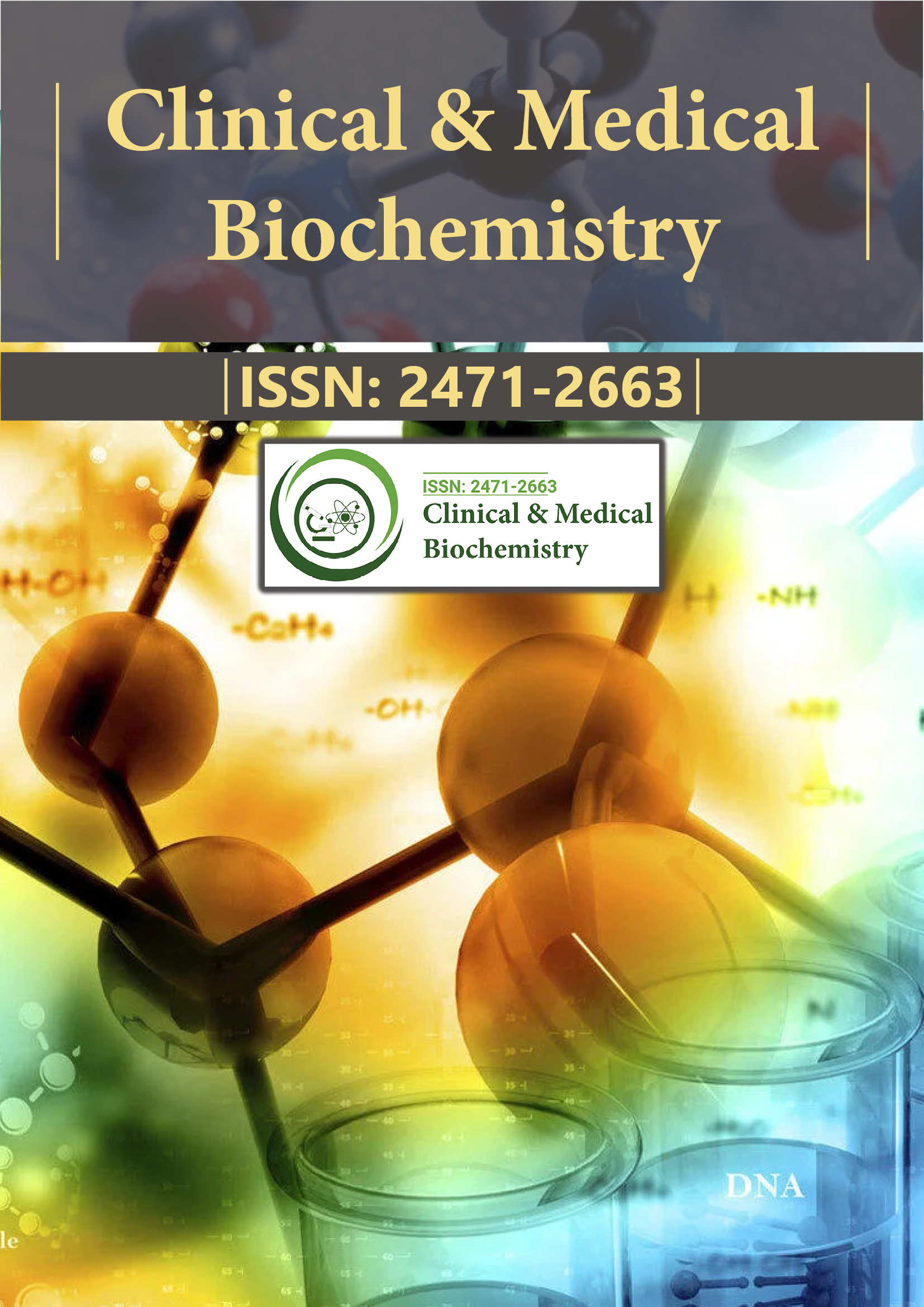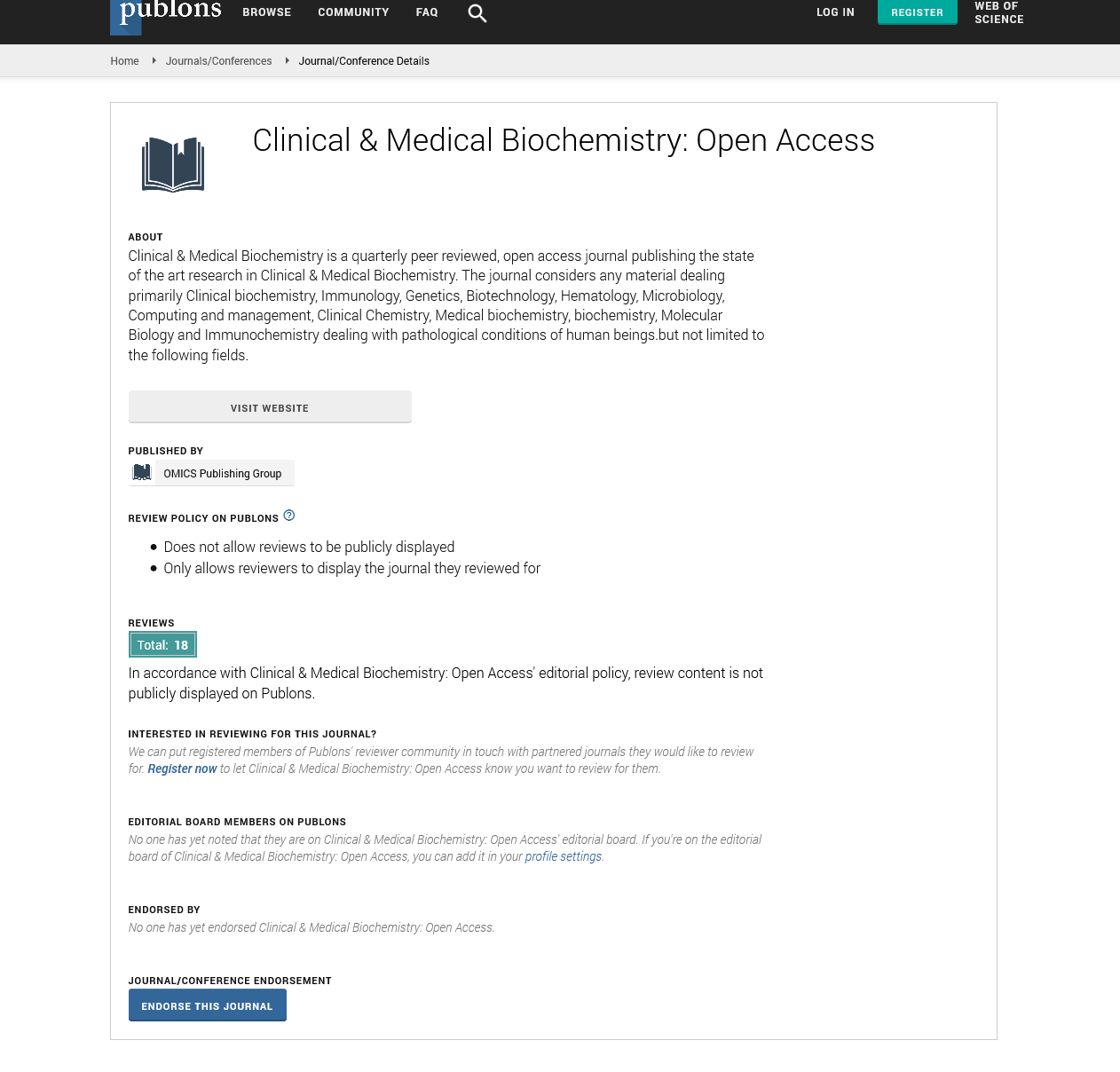Indexed In
- RefSeek
- Directory of Research Journal Indexing (DRJI)
- Hamdard University
- EBSCO A-Z
- OCLC- WorldCat
- Scholarsteer
- Publons
- Euro Pub
- Google Scholar
Useful Links
Share This Page
Journal Flyer

Open Access Journals
- Agri and Aquaculture
- Biochemistry
- Bioinformatics & Systems Biology
- Business & Management
- Chemistry
- Clinical Sciences
- Engineering
- Food & Nutrition
- General Science
- Genetics & Molecular Biology
- Immunology & Microbiology
- Medical Sciences
- Neuroscience & Psychology
- Nursing & Health Care
- Pharmaceutical Sciences
Commentry - (2022) Volume 8, Issue 6
Pathological Conditions of Chemokineâs and Chemokine Receptors
Richard Alberto*Received: 17-Oct-2022, Manuscript No. CMBO-22-18989; Editor assigned: 20-Oct-2022, Pre QC No. CMBO-22-18989 (PQ); Reviewed: 09-Nov-2022, QC No. CMBO-22-18989 ; Revised: 18-Nov-2022, Manuscript No. CMBO-22-18989 (R); Published: 28-Nov-2022, DOI: 10.35841/2471-2663.22.8.140
Description
A diverse family of small cytokines known as chemokines typically has low molecular weights between 7 to 15 kDa. All immune cells can travel and stay in different places depending on the presence of chemokines and their receptors. The release of some chemokines, which are known to be pro-inflammatory, can be produced during an immune response at an infection site, whereas other chemokines, which are thought to be homeostatic, are involved in regulating cell migration during tissue growth or maintenance. The uniqueness of this group of mediators leads to their physiological significance. Chemokine’s, in contrast to typical leukocyte chemo-attractants, induce the attraction of specific leukocyte subsets with high specificity. The effect of receptor activation is a change in integrin conformation, which stops leukocytes on endothelium and causes them to move laterally across the endothelium. Additionally, signals that cause cell polarisation and directional migration up the gradient of chemo attractants are produced in tissues where there is a concentration gradient of chemokines.
The rhodopsin family of cell-surface G-protein-coupled receptors with seven transmembrane domains includes a significant branch known as chemokine receptors. Under physiological and pathological circumstances, chemokines bind to their respective receptors and modulate the functions and movement of their target cells, particularly leukocyte trafficking. Chemokines' main function is to act as a chemoattractant to direct cell migration. Chemokine-attracting cells move to the chemokine's source in response to a signal of increased chemokine concentration. Some chemokines regulate immune system cells during immune surveillance functions, such as sending lymphocytes to the lymph nodes so they can interact with the antigen-presenting cells present in these tissues to screen for pathogen invasion. These chemokines, often go by the name of homeostatic chemokines, where it creates and released without the necessity for the source cells to be stimulated.
Numerous inflammatory and noninflammatory disease conditions, such as sepsis, atherosclerosis, arthritis, cystic fibrosis, and asthma, have been demonstrated to contain a variety of chemokines. The level of leukocyte infiltration within the diseased tissue is strongly associated with the presence of chemokines in many inflammatory diseases. Chemokines can either help leukocyte adhesion and transmigration into damaged tissues, which leads to the phagocytosis and killing of microbes or allogeneic cells (host resistance), or they can cause aberrant chemokine production, which can contribute to the initiation and development of disease pathology. Maintaining adequate tissue function during development and organogenesis depends on cell migration. Chemotaxis is a mechanism that guides cell movement in response to the presence of chemicals in its environment. Chemokines are secreted by cells to cause chemotaxis in their surrounding neighboring cells.
Chemokines are mostly in responsible of attracting White Blood Cells (WBCs) or leukocytes during pathological situations, such as inflammatory neurological diseases and viral infections. Chemokines are released when a bacterium or foreign substance is present, and they signal the immune cells to proceed towards the infection. Immune system phagocytic leukocytes move fast and deliberately in chemo attractant gradients, which enable them to operate as the first line of cell-mediated host defense against pathogens. A set of coordinated biochemical and cellular events, including changes in ion fluxes, integrin avidity, and transmembrane potential, changes in cell shape, the secretion of lysosomal enzymes, the incorporation of superoxide anions, and improved locomotion, are initiated once chemoattractants interact with leukocytes. These chemotactic cytokines are components of the chemokine superfamily, which is subdivided into four groups (CXC, CX3C, CC, and C) based on the placement of the amino acid sequence's first two distant and highly conserved cysteines. All of the chemokine receptors that have been identified so far are membrane-bound, 7- transmembrane domain, G-protein coupled molecules.
Conclusion
Understanding the biochemistry of chemokine’s and their receptors has developed rapidly in recent years. With this advancement, chemokine receptors are now more frequently linked to specific human disease states. The fact that nonhemopoietic cell types including endothelial and epithelial cells express chemokine receptors will very probably result in the receptors being connected to various biological and pathological processes like angiogenesis, organ development, metastasis, and cancer. These make an excellent target for immunotherapy since leukocyte infiltration and tumour cells both express chemokines and chemokine receptors. To prevent potential adverse effects, a deeper understanding of their functions in various cancers is still required.
Citation: Alberto R (2022) Pathological Conditions of Chemokineâ??s and Chemokine Receptors. Clin Med Bio Chem. 8:140.
Copyright: © 2022 Alberto R. This is an open-access article distributed under the terms of the Creative Commons Attribution License, which permits unrestricted use, distribution, and reproduction in any medium, provided the original author and source are credited.

